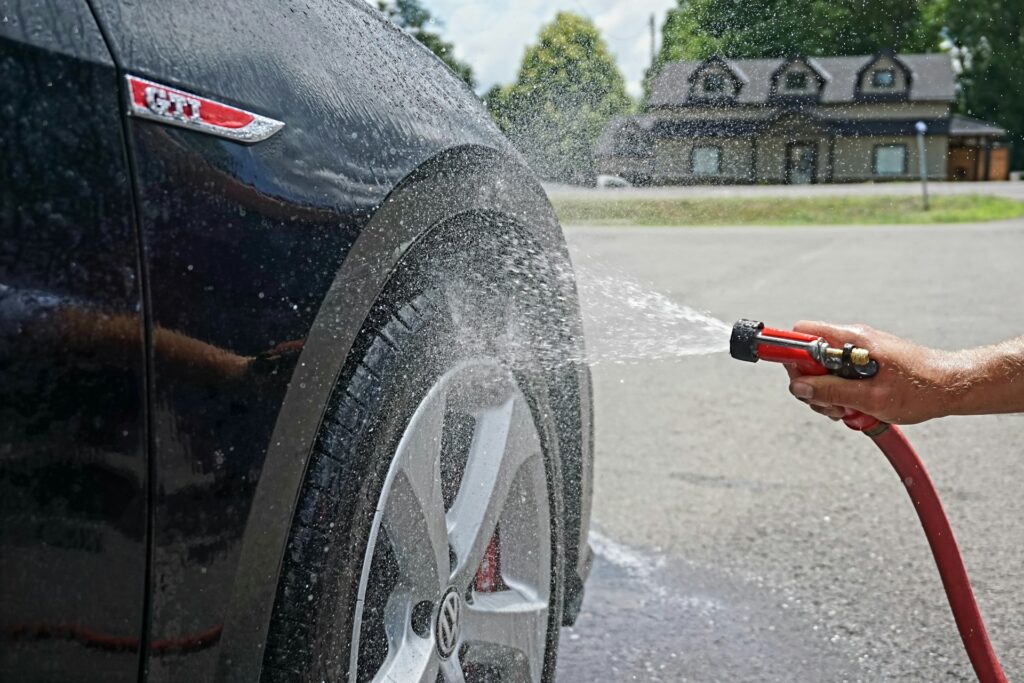Maintaining a vehicle’s exterior in pristine condition requires proper care and the right tools. An automotive buffer polisher is essential for achieving a high-gloss, swirl-free finish. Whether for professional detailing or home use, understanding how these polishers work is crucial for the best results.
This comprehensive guide explores different types of automotive buffer polishers, their benefits, how to choose the right one, and step-by-step usage tips. By the end of this article, you will be well-equipped to polish your car like a pro.
What Is an Automotive Buffer Polisher?
An automotive buffer polisher is a power tool designed to apply polish, wax, and compounds to a vehicle’s surface. It enhances the car’s appearance by removing minor scratches, swirl marks, and oxidation. Buffers work by rotating or oscillating a pad against the car’s paint, ensuring even product distribution and a smooth finish.
Types of Automotive Buffer Polishers
There are different types of automotive buffer polishers, each catering to specific detailing needs. Understanding their differences will help you select the best one for your requirements.
1. Rotary Buffer Polishers
Rotary polishers operate using a single circular motion. They offer high power and efficiency, making them ideal for professional detailers. However, improper handling can lead to paint burns or swirl marks.
2. Dual-Action (DA) Polishers
Dual-action polishers move in both circular and oscillating motions. This design reduces the risk of damaging the paint while still providing excellent results. They are suitable for beginners and professionals alike.
3. Random Orbital Polishers
Random orbital polishers are user-friendly and designed for light to moderate detailing work. They operate at lower speeds, making them safer for beginners.
4. Corded vs. Cordless Polishers
- Corded Polishers: Offer unlimited runtime, making them ideal for prolonged detailing sessions.
- Cordless Polishers: Provide mobility and ease of use but require battery charging.
Benefits of Using an Automotive Buffer Polisher
Investing in an automotive buffer polisher brings numerous advantages:
- Time-Saving: Reduces the effort and time needed for polishing.
- Professional Finish: Achieves a high-gloss, swirl-free surface.
- Paint Protection: Enhances durability by applying protective wax or sealants evenly.
- Versatility: Suitable for various detailing tasks, from polishing to scratch removal.
How to Choose the Best Automotive Buffer Polisher
Selecting the right buffer polisher depends on several factors:
1. Power and Speed Control
Higher wattage and variable speed settings provide better control, allowing adjustments based on the task.
2. Weight and Ergonomics
A lightweight polisher with an ergonomic handle ensures comfortable usage and reduces fatigue.
3. Pad Compatibility
Choose a model that supports interchangeable pads to suit different detailing needs.
4. Price and Brand Reputation
Investing in a reputable brand ensures quality, durability, and access to replacement parts.
Step-by-Step Guide to Using an Automotive Buffer Polisher
Using a buffer polisher correctly ensures the best results. Follow these steps:
Step 1: Gather the Required Materials
- Automotive buffer polisher
- Polishing pads
- Car polish or compound
- Microfiber cloths
- Masking tape (for protecting sensitive areas)
Step 2: Prepare the Car Surface
- Wash and dry the car thoroughly.
- Inspect the surface for scratches or contaminants.
- Use clay bars to remove stubborn dirt.
- Apply a small amount of polish to the pad.
- Spread the polish evenly over the surface before turning on the polisher.
- Begin with the lowest speed setting.
- Use slow, overlapping motions to ensure even application.
- Avoid applying excessive pressure.
- Use a microfiber cloth to remove excess polish.
- Inspect the finish and reapply if necessary.
Maintenance Tips for Your Automotive Buffer Polisher
Proper maintenance extends the life of your polisher and ensures consistent performance.
- Clean the Pads: Wash or replace polishing pads regularly.
- Store Properly: Keep in a dry, dust-free environment.
- Check Electrical Components: Inspect cords and batteries for damage.
Common Mistakes to Avoid
- Using the Wrong Pad: Different pads serve different purposes; using the wrong one can damage the paint.
- Applying Too Much Pressure: Excessive force can create swirl marks or burn the paint.
- Skipping Surface Preparation: Polishing a dirty surface can lead to scratches.
Top Recommended Automotive Buffer Polishers
1. DeWalt DWP849X Rotary Polisher
- Powerful 12-amp motor
- Variable speed control
- Soft start feature
2. Griot’s Garage 6″ Random Orbital Polisher
- User-friendly design
- Ideal for beginners
- Adjustable speed settings
3. Meguiar’s MT300 Dual Action Polisher
- Professional-grade performance
- Ergonomic handle for comfort
- Digital torque management
Conclusion
An automotive buffer polisher is an invaluable tool for maintaining a car’s glossy finish. By selecting the right polisher and following proper techniques, you can achieve professional-grade results at home. Regular maintenance and correct usage ensure long-lasting performance, making it a worthwhile investment for car enthusiasts and professional detailers alike.


